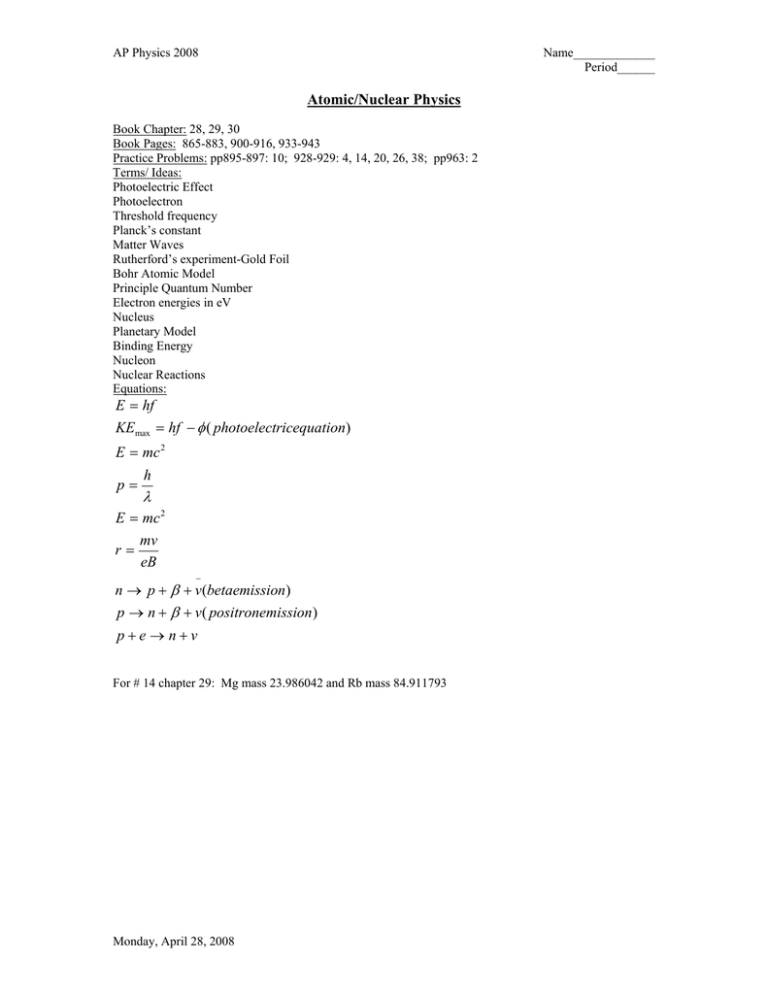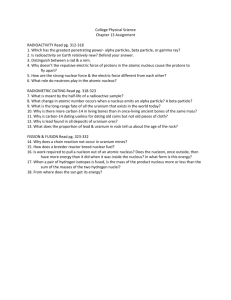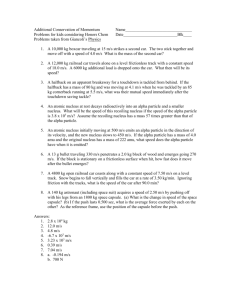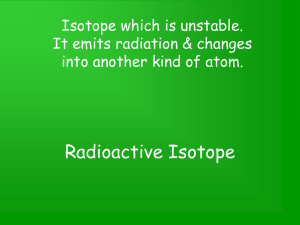Atomic/Nuclear Physics
advertisement

AP Physics 2008 Name_____________ Period______ Atomic/Nuclear Physics Book Chapter: 28, 29, 30 Book Pages: 865-883, 900-916, 933-943 Practice Problems: pp895-897: 10; 928-929: 4, 14, 20, 26, 38; pp963: 2 Terms/ Ideas: Photoelectric Effect Photoelectron Threshold frequency Planck’s constant Matter Waves Rutherford’s experiment-Gold Foil Bohr Atomic Model Principle Quantum Number Electron energies in eV Nucleus Planetary Model Binding Energy Nucleon Nuclear Reactions Equations: E = hf KEmax = hf − φ ( photoelectricequation) E = mc 2 p= h λ E = mc 2 r= mv eB − n → p + β + v(betaemission) p → n + β + v( positronemission) p+e → n+v For # 14 chapter 29: Mg mass 23.986042 and Rb mass 84.911793 Monday, April 28, 2008 AP Physics 2008 Name_____________ Period______ Free Response: An unstable nucleus that is initially at rest decays into a nucleus of fermium-252 and an alpha particle that has kinetic energy of 8.4MeV. The atomic mass of the alpha particle and the fermium are 4.00260 and 252.08249 amu. 1) What is the atomic number of the original unstable nucleus? 2) What is the velocity of the alpha particle? What is the velocity of the fermium nucleus? 3) Where does the kinetic energy of the alpha particle come from? Calculate the binding energy of the Fm atom. 4) Suppose the fermium-252 nucleus could undergo a decay in which a beta particle was produced. How would this affect the atomic number of the nucleus? What would the atomic mass and number be of the resulting element. 5) Using Coulomb’s Law and an assumed circular orbit, derive an expression for the orbital velocity of an electron in the ground state of a hydrogen atom. (Leave answer in constants) Monday, April 28, 2008







